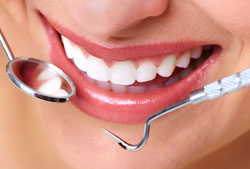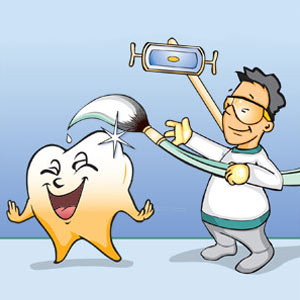
Porcelain veneers from your London, Ontario dentist change the aesthetics of healthy smiles for the better. One of today’s most popular and versatile cosmetic dental treatments, veneers refinish teeth with bright, customized shells of dental grade ceramic.
To begin the process, the cosmetic dentist consults with their prospective porcelain veneer patient. They examine the mouth, takes x-Veneersrays and 3-dimensional imaging to get a complete picture of the individual’s oral health and facial structure. The best London veneers candidates have healthy teeth and gums, few to no restorations and realistic expectations for the finished result.
Veneers Cover Many Imperfections
Often used as a part of a comprehensive smile makeover that includes teeth whitening, bonding and other dental treatments, porcelain veneers address extrinsic and intrinsic stains not responsive to whitening. They also cover the front side of teeth marred by:
- chips
- hairline cracks
- unconventional contour and size
- gaps and mild crowding issues
- small rotations
The Veneer Process
Porcelain veneers require removal a 1/2 mm vertical slice of enamel from the front side of each tooth. The cosmetic dentist takes oral impressions and sends a treatment plan to a preferred dental lab. The lab ceramist uses the information provided to craft a model of the patient’s mouth and to make each veneer individually. Veneers match surrounding teeth and create a smile zone that blends in well with the rest of the mouth and the patient’s overall facial appearance.
Some London dentists do a “try on” before final placement. During the actual bonding process, the doctor can adjust the cement to achieve the appropriate color. He also ensures proper fit of each veneer for excellent longevity and freedom from tooth and gum sensitivity.
Follow-up Care
The veneer patient brushes twice daily with a low abrasive fluoride toothpaste and flosses each day as usual. He checks in with the cosmetic dentist 2 weeks after veneer placement and then keeps 6-month exam and cleaning appointments.
The American Academy of Cosmetic Dentistry says veneers add durability and resiliency to teeth. Patients say this premiere cosmetic treatment beautifies their smiles more than they ever thought possible.
Learn More
Dr. Adam Burton and everyone at Northland Dental Centre invites you to learn more about porcelain veneers. They are a vital part of today’s comprehensive dental care. Request more information at www.northlanddental.com



